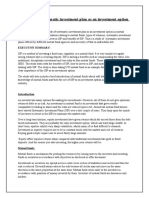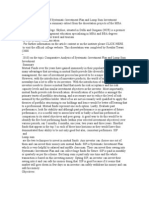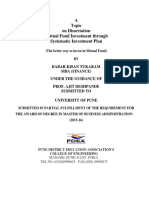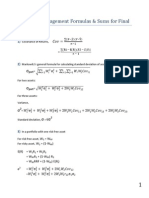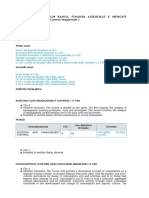0% found this document useful (0 votes)
69 views7 pagesWhat Is Systematic Investment Plan or SIP?: Investment Avenue Mutual Fund
Systematic Investment Plan or SIP is a method of investing in mutual funds by committing to invest a fixed amount regularly over time instead of investing a lump sum. With SIP, you automatically purchase more fund units when prices are low and fewer units when prices are high, averaging out your purchase cost. This rupee cost averaging helps minimize risk compared to lump sum investing. SIPs enforce regular disciplined investing and can be started with small monthly amounts as low as Rs. 100. They allow flexibility to stop, start or modify investments anytime. While lump sum investing may outperform in consistently rising markets, SIPs are better suited to handle market volatility over the long term.
Uploaded by
Cheruv SoniyaCopyright
© Attribution Non-Commercial (BY-NC)
We take content rights seriously. If you suspect this is your content, claim it here.
Available Formats
Download as DOCX, PDF, TXT or read online on Scribd
0% found this document useful (0 votes)
69 views7 pagesWhat Is Systematic Investment Plan or SIP?: Investment Avenue Mutual Fund
Systematic Investment Plan or SIP is a method of investing in mutual funds by committing to invest a fixed amount regularly over time instead of investing a lump sum. With SIP, you automatically purchase more fund units when prices are low and fewer units when prices are high, averaging out your purchase cost. This rupee cost averaging helps minimize risk compared to lump sum investing. SIPs enforce regular disciplined investing and can be started with small monthly amounts as low as Rs. 100. They allow flexibility to stop, start or modify investments anytime. While lump sum investing may outperform in consistently rising markets, SIPs are better suited to handle market volatility over the long term.
Uploaded by
Cheruv SoniyaCopyright
© Attribution Non-Commercial (BY-NC)
We take content rights seriously. If you suspect this is your content, claim it here.
Available Formats
Download as DOCX, PDF, TXT or read online on Scribd
/ 7










































